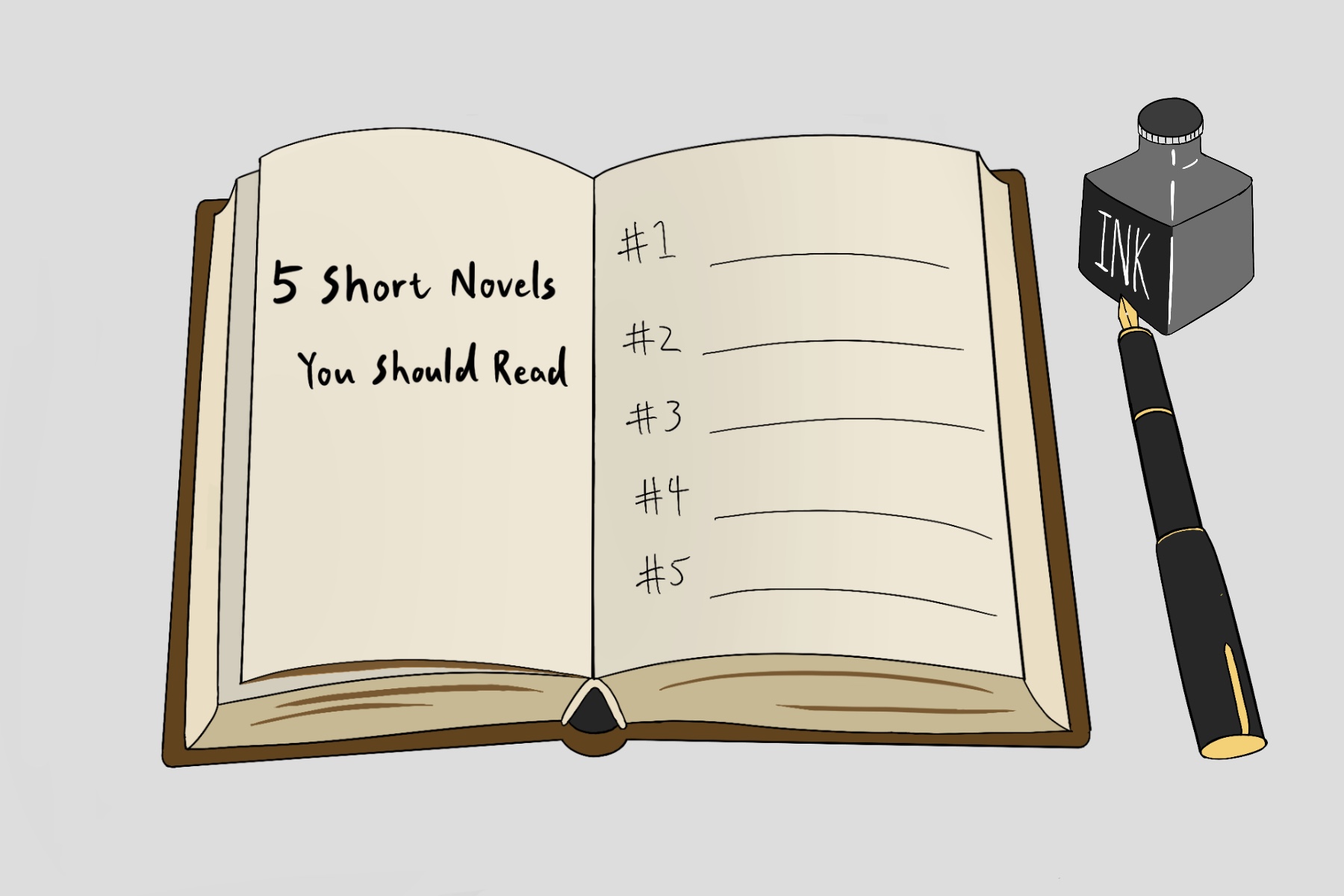The most powerful novels are not necessarily the longest. Kenneth C. Davis’ “Great Short Books” (2022) offers a diverse compilation of 58 short novels that avid readers can devour in one pleasant afternoon. While “Great Short Books” does not quite match the production and execution of James Mustich’s “1000 Books to Read Before You Die” (2018), Davis’ collection is valuable in that each book he suggests is slim. The five recommendations featured in this list are, in my opinion, Davis’ most worthwhile choices.
1. “Death in Venice” (1912) by Thomas Mann
“Death in Venice” is a novella about a writer that is actually worth the read. A brilliant example of gay fiction, this short novel offers an engaging depiction of a traveler’s quest for fulfillment.
In eighty pages, Thomas Mann captures the difficult world of his solitary protagonist, a writer named Gustav Aschenbach. When Mann introduces him, Aschenbach has enjoyed a relatively successful career of creativity — in large part due to his youthful exuberance and determination to produce something that will outlive him. As Aschenbach splits his time between the city of Munich and a country villa, he develops an insatiable yearning to escape his routine. So he makes his way to Italy and eventually finds himself in the glorious city of water: Venice. After gliding along in a gondola and entering a luxurious hotel, Aschenbach glimpses a young Polish boy called Tadzius and makes his first encounter with what he has always been looking for. The sight of Tadzius’ golden locks inspire Aschenbach to embark on his final journey.
Mann’s writing is impeccable, as he weaves beautiful descriptions of Venice’s mysterious nature with philosophical musings about the life of a writer. One such example of Mann’s wonderfully rich prose is his reflection on loneliness:
The observations and encounters of a loner who seldom speaks are both more nebulous and more penetrating than those of a gregarious man; his thoughts are more intense, more peculiar, and never without a touch of sadness… Solitude ripens originality in us, bold and disconcerting beauty, poetry. But solitude also ripens the perverse, the asymmetrical, the absurd, the forbidden.
Even through the filter of translation, the fine specificity of Mann’s adjectives give readers a full sense of the ultimate tragedy of the writer. To produce a great novel, writers must trap themselves in a world of their own creation; their only escape is to disengage with their creative endeavors. The question of whether Aschenbach will ever escape his imagination propels the novel to its powerful conclusion.
2. “Mrs. Dalloway” (1925) by Virginia Woolf
Virginia Woolf is one of the great depicters of human consciousness, and “Mrs. Dalloway” represents her best effort at portraying its complexity. The main protagonist is Clarissa Dalloway, a woman married to a British politician in post-World War I England. With an inimitable first line — “Mrs. Dalloway said she would buy the flowers herself” — Woolf introduces the reader to a woman who longs for the summers of her youth. Septimus Smith, the secondary protagonist, is a former soldier who struggles with issues of shellshock. Clarissa and Septimus’ plotlines intersect briefly to create a worthy conclusion in which Woolf transforms ordinary life into an extraordinary novel.
While notable for its strong plot, Woolf’s intense look at an ordinary day is especially remarkable for its ability to trace the human mind. Woolf bounces readers from character to character and places them in the minds of many different Londoners to create an expansive portrait of postwar ennui. Woolf’s masterful ability to reproduce human consciousness is evident in Clarissa’s first reminiscence of her past: “What a lark! What a plunge! For so it had always seemed to her, when, with a little squeak of the hinges, which she could hear now, she had burst open the French windows and plunged at Bourton into the open air.” The squeak of a door in Clarissa’s current home triggers memories of the squeaky windows of her young summer in Bourton. Thus, Virginia Woolf plunges into one of the greatest novels ever written.
3. “Passing” (1929) by Nella Larsen
Although a recent Netflix film adaptation has generated greater interest in Nella Larsen’s “Passing,” the film has not convinced nearly enough people to read this brilliantly concise Harlem Renaissance novel. Set in both Chicago and Harlem, this story centers around two friends who fall on different sides of the issue of “passing.” This term describes the ability of a person from one racial group to be perceived and accepted as a member of another racial group. Clare Kendry is a light-skinned African American woman who decides to pass as a white woman. She eventually marries a racist white man who, completely unaware of her heritage, frequently uses racist slurs in front of her and her friends. One such friend, Irene Redfield, has remained a part of the African American community. As the story develops, Redfield slowly becomes more jealous of Kendry’s higher position in society — a conflict that reaches a breaking point by the end of the novel.
Larsen writes about the societal problems of her time with great clarity. Her impressively lean and incisive prose shines in this setting description: “Chicago. August. A brilliant day, hot, with a brutal staring sun pouring down rays that were like molten rain. A day on which the very outlines of the buildings shuddered as if in protest at the heat.” Tension builds and builds in this brief novel to a fever pitch and ultimately leaves the reader wanting more.
4. “The Sailor Who Fell from Grace with the Sea” (1963) by Yukio Mishima
With poetic language and unforgettable characters, Yukio Mishima explores both the futility of sailing life and the arrogance of youth in “The Sailor Who Fell from Grace with the Sea.” Set in the port city of Yokohama, Japan, the novel revolves around three characters: a 13-year-old boy named Noboru, his 33-year-old mother Fusako and her 20-year-old male lover Ryuji. Fusako’s husband died when Noboru was 8, so her search to find a masculine presence for their home leads Fusako to the young sailor Ryuji. His strong arms and caring soul seem to cure the loneliness she has had to endure for five years. However, the blaring call of a foghorn signals Ryuji’s duty to the sea, an occupation that Noboru idolizes from their first meeting. Noboru is a member of a boy gang — a group whose upper-class backgrounds lead them to believe that they are the chosen geniuses who can cure the societal ills of bad parents and stupid teachers. Reminiscent of the stranded boys in William Golding’s “Lord of the Flies” and the Ivy League murderers in Alfred Hitchcock’s “Rope,” the gang shares an aloofness that leads to dire and violent consequences.
Strong character development and writing appear throughout the novel. For example, Mishima masterfully describes Ryuji and Fusako’s temporary separation as Ryuji’s ship departs: “The parting, like the white fruit of an apple discoloring instantly around the bite, had begun three days before when they had met aboard the Rakuyo. Saying goodbye now entailed not a single new emotion.” The questions of whether their love can survive Ryuji’s absence and how the violence of Noboru’s gang will escalate guide the reader to the novel’s stunning conclusion.
5. “Wide Sargasso Sea” (1966) by Jean Rhys
Jean Rhys’ “Wide Sargasso Sea” explores colonialism and slavery in the Caribbean. Inspired by Charlotte Brontë’s “Jane Eyre,” Rhys further develops the story of Rochester’s first wife, the madwoman in the attic named Bertha Mason. While the novel is technically a fan fiction, it stands as a masterpiece in its own right. Antoinette Mason is a white Creole woman who is forced into marriage by her evil stepfather. Antoinette’s childhood trauma involving her mother and the loss of her childhood home provide much needed context for understanding her destructive counterpart in Brontë’s novel. Rhys’ use of Antoinette’s perspective in the novel gives the reader an insight into Antoinette’s conflicted mind. She has rocked between social classes so many times that she has little understanding of her place in the world.
Rhys’ insight into Rochester through first person perspective is also effective. To outsiders like Rochester, the strangeness of the Caribbean lends it its beauty. He notes: “Standing on the veranda I breathed the sweetness of the air. Cloves I could smell and cinnamon, roses and orange blossom. And an intoxicating freshness as if all this had never been breathed before.” Rhys wonderfully writes from both an outsider and insider perspective to capture a full picture of the colonial atrocities in the Caribbean. Both characters’ mind frames provide for an illuminating read and imbue Brontë’s English novel with greater depth.
















